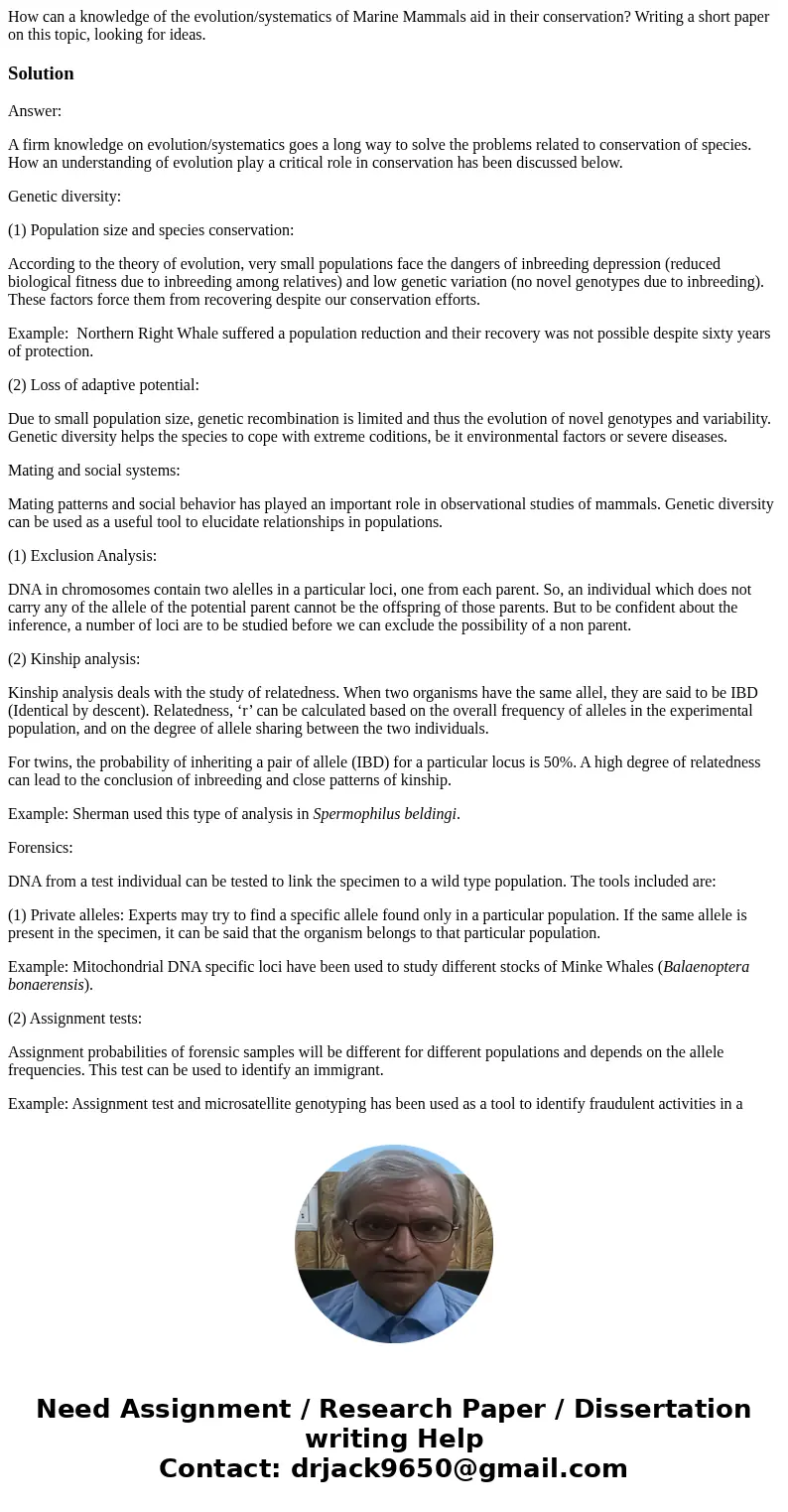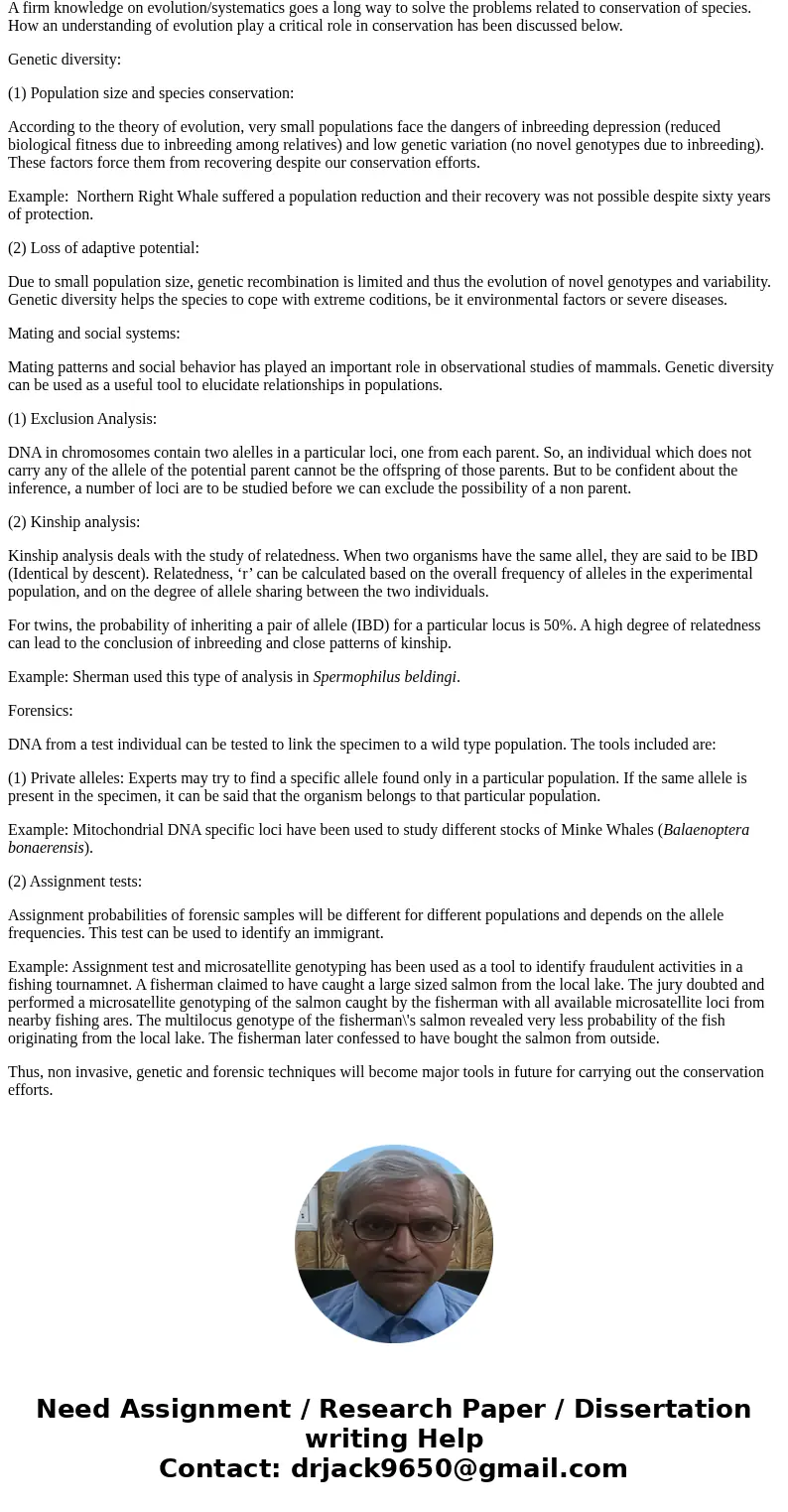How can a knowledge of the evolutionsystematics of Marine Ma
How can a knowledge of the evolution/systematics of Marine Mammals aid in their conservation? Writing a short paper on this topic, looking for ideas.
Solution
Answer:
A firm knowledge on evolution/systematics goes a long way to solve the problems related to conservation of species. How an understanding of evolution play a critical role in conservation has been discussed below.
Genetic diversity:
(1) Population size and species conservation:
According to the theory of evolution, very small populations face the dangers of inbreeding depression (reduced biological fitness due to inbreeding among relatives) and low genetic variation (no novel genotypes due to inbreeding). These factors force them from recovering despite our conservation efforts.
Example: Northern Right Whale suffered a population reduction and their recovery was not possible despite sixty years of protection.
(2) Loss of adaptive potential:
Due to small population size, genetic recombination is limited and thus the evolution of novel genotypes and variability. Genetic diversity helps the species to cope with extreme coditions, be it environmental factors or severe diseases.
Mating and social systems:
Mating patterns and social behavior has played an important role in observational studies of mammals. Genetic diversity can be used as a useful tool to elucidate relationships in populations.
(1) Exclusion Analysis:
DNA in chromosomes contain two alelles in a particular loci, one from each parent. So, an individual which does not carry any of the allele of the potential parent cannot be the offspring of those parents. But to be confident about the inference, a number of loci are to be studied before we can exclude the possibility of a non parent.
(2) Kinship analysis:
Kinship analysis deals with the study of relatedness. When two organisms have the same allel, they are said to be IBD (Identical by descent). Relatedness, ‘r’ can be calculated based on the overall frequency of alleles in the experimental population, and on the degree of allele sharing between the two individuals.
For twins, the probability of inheriting a pair of allele (IBD) for a particular locus is 50%. A high degree of relatedness can lead to the conclusion of inbreeding and close patterns of kinship.
Example: Sherman used this type of analysis in Spermophilus beldingi.
Forensics:
DNA from a test individual can be tested to link the specimen to a wild type population. The tools included are:
(1) Private alleles: Experts may try to find a specific allele found only in a particular population. If the same allele is present in the specimen, it can be said that the organism belongs to that particular population.
Example: Mitochondrial DNA specific loci have been used to study different stocks of Minke Whales (Balaenoptera bonaerensis).
(2) Assignment tests:
Assignment probabilities of forensic samples will be different for different populations and depends on the allele frequencies. This test can be used to identify an immigrant.
Example: Assignment test and microsatellite genotyping has been used as a tool to identify fraudulent activities in a fishing tournamnet. A fisherman claimed to have caught a large sized salmon from the local lake. The jury doubted and performed a microsatellite genotyping of the salmon caught by the fisherman with all available microsatellite loci from nearby fishing ares. The multilocus genotype of the fisherman\'s salmon revealed very less probability of the fish originating from the local lake. The fisherman later confessed to have bought the salmon from outside.
Thus, non invasive, genetic and forensic techniques will become major tools in future for carrying out the conservation efforts.


 Homework Sourse
Homework Sourse